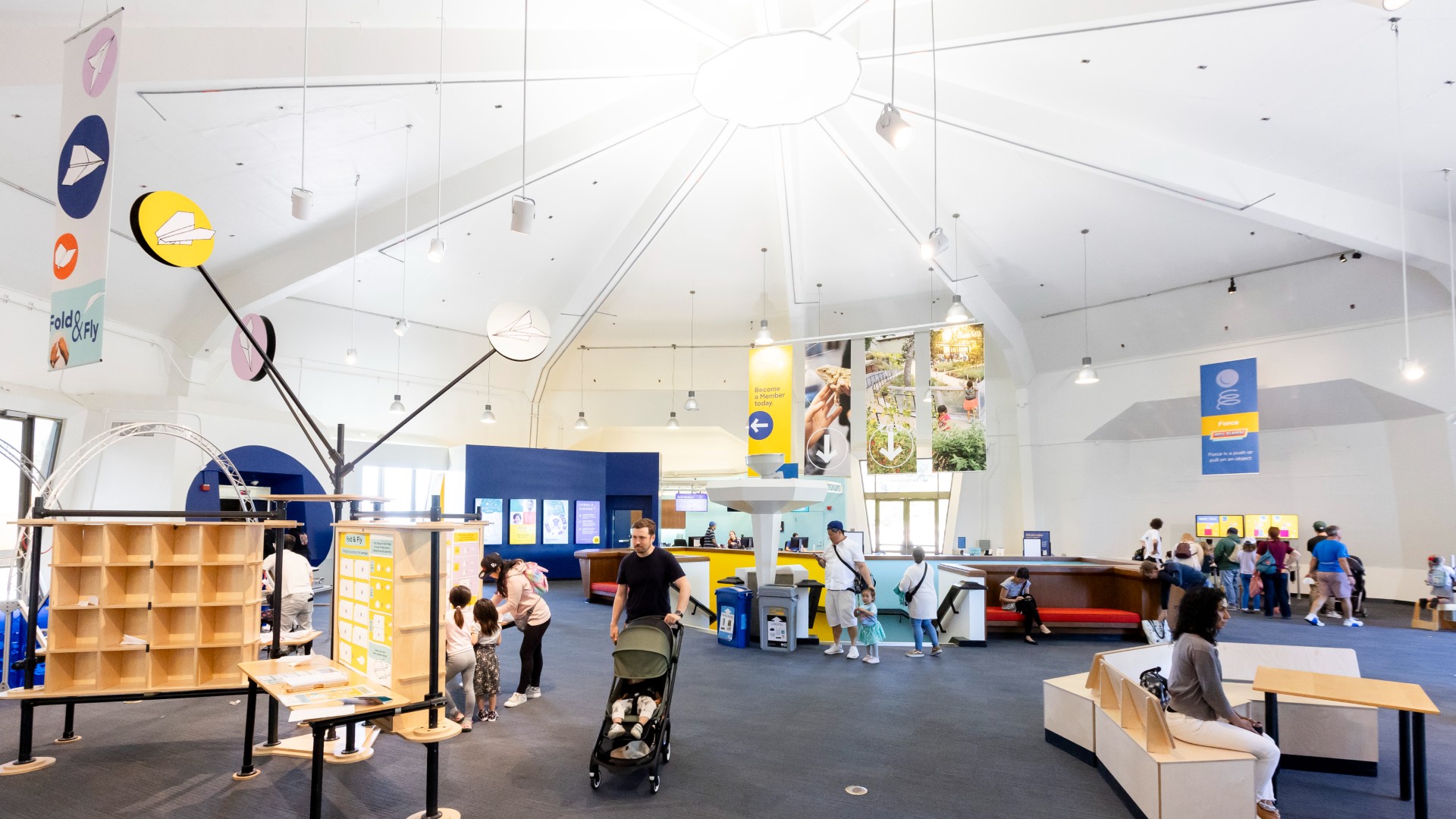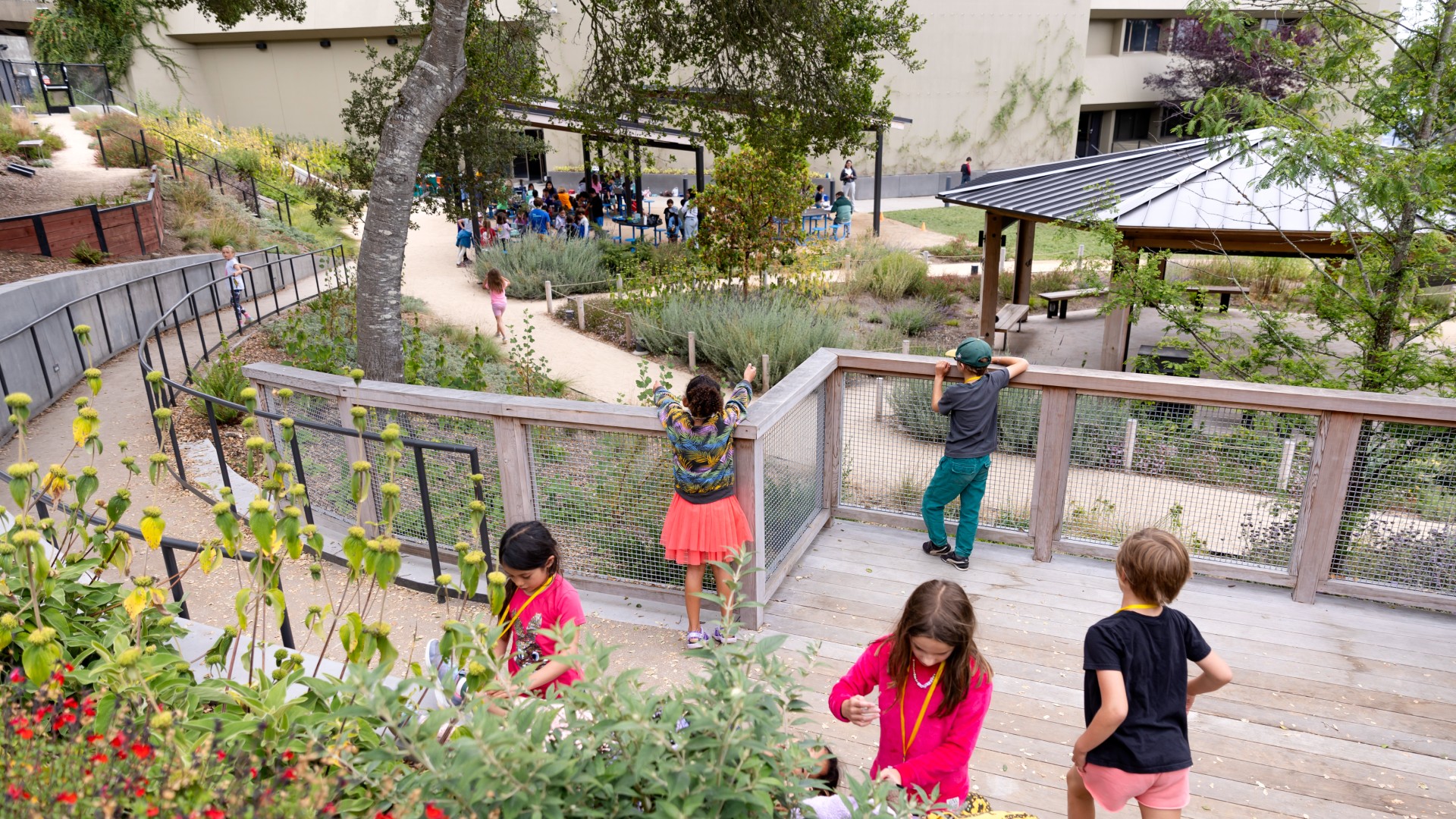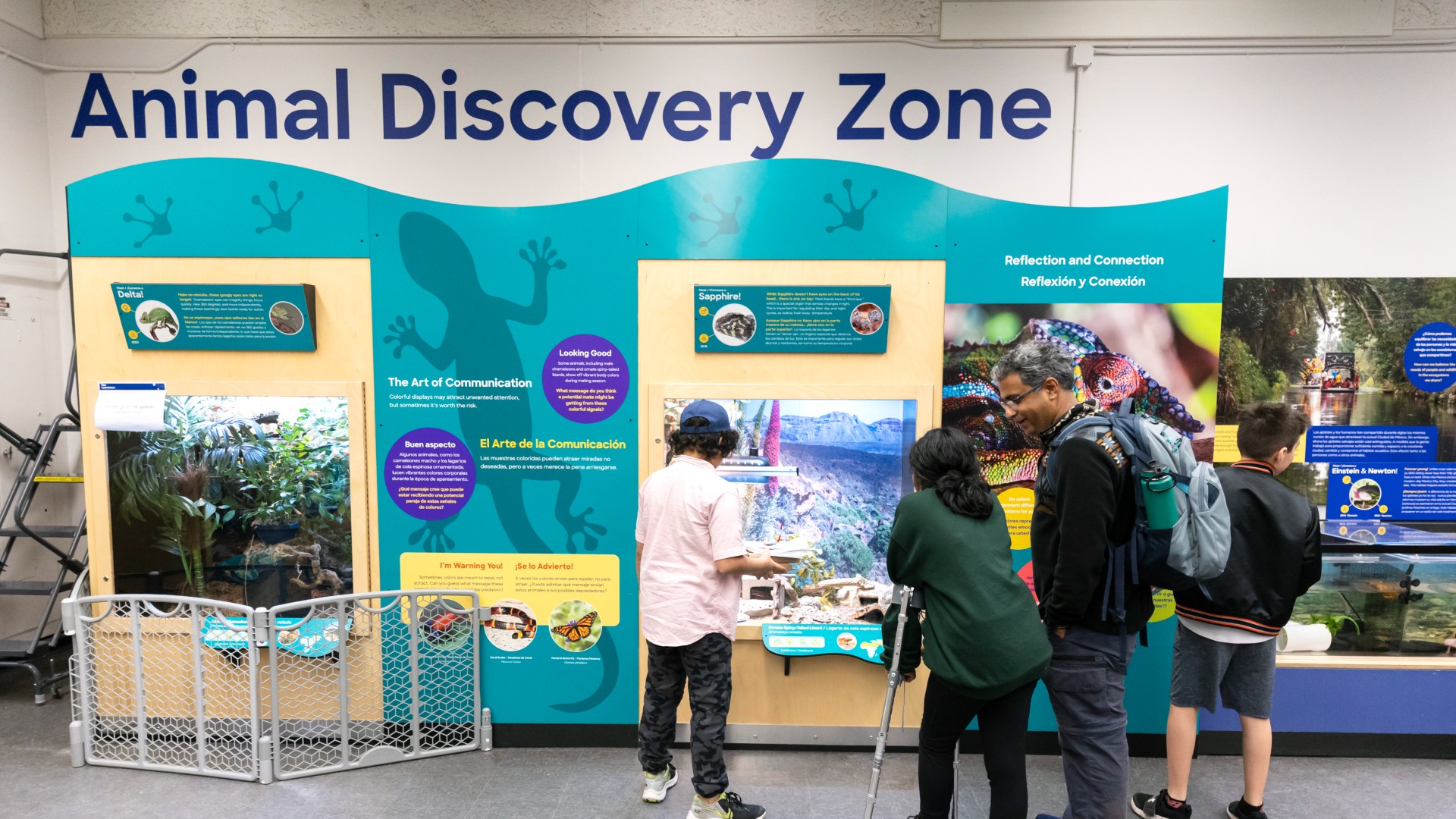Situated in the hills above the UC Berkeley campus since 1968, The Lawrence Hall of Science is one of the Bay Area’s most beloved science centers, with a long history of inspiring tomorrow by advancing science education and providing engaging learning experiences to the public. When the COVID-19 pandemic hit, forcing closures and limiting foot traffic across the country, it posed challenges to institutions like The Lawrence – but also presented opportunities. With support from the Moore Foundation and other partners, The Lawrence took full advantage of the shutdown to continue its work on bringing its long-term strategic planning to fruition, with a focus on refreshing its facilities, enhancing the visitor experience, improving programming, renewing its connection with the local Indigenous community, the Ohlone, and ensuring that its high quality instructional materials were useable by K-12 schools both in-person and virtually while continuing to serve as leader in the field of STEM education.
The Lawrence closed its doors in March 2020 and remained shut for 19 months. Director Rena Dorph discussed the decision in a letter, highlighting the planned and in-progress upgrades across the facility and how the organization would handle the coronavirus response. During the closure, The Lawrence continued to engage the community by providing a variety of accessible learning opportunities, including outdoor pop-ups, interactive online activities and at-home curricular supplements for its K-12 instructional materials.
Building through the pandemic
Rebranding work had begun before the pandemic, but the shutdown offered the chance to fast-track the planned upgrades. One point of emphasis was to improve and modernize the facilities and exhibits, including expanding accessibility through new paint and signage across the building that created a more welcoming, vibrant and easier-to-navigate experience. Throughout the process, staff leaned into creating an attractive intergenerational learning space that is engaging for all ages without being overwhelming.

[Image] Exhibits in The Lawrence's lobby. Credit: The Lawrence Hall of Science
“Learning in informal spaces happens more powerfully when people are doing it together–across generations and as part of family and community units,” said Dorph. “We wanted to make it the richest experience it could be.”
Anchor funding was important for enabling renovation and space refresh, allowing The Lawrence to raise money for one major project at a time and carry the momentum into the next project, working piece by piece to overhaul huge portions of the space. Projects completed during the refresh included the construction of a Dome Theater (to replace its temporary planetarium structure), the redesign and reopening of the Animal Discovery Zone, the installation of the animatronic Dinosaur Lookout Exhibit, and the construction and opening of the Robert and Elizabeth Karplus Outdoor Nature Lab.
The Lawrence also has two main exhibit halls that are continuously refreshed, with one focused on the math and science of everyday life and the other dedicated to exploring global issues. Exhibits were designed in collaboration with UC Berkeley faculty, The Lawrence’s education staff, and the local community to be multi-sensory, interactive experiences with a focus on accessibility and belonging.
Unique among science centers, The Lawrence is fundamentally a learning lab that studies how people learn science and shares takeaways – effective approaches, programs, and materials – with the broader field, so experiences are designed not only to be appealing to learners, but also with research design and scaling in mind.
Strengthening relationships: The 'ottoy Initiative
The Lawrence sits on the territory of xučyun (Huichin), the ancestral and unceded land of the Chochenyo-speaking Ohlone people. 'ottoy is a Chochenyo word describing a philosophy and intention of repair and mending, and the initiative, which picked up steam post-pandemic, intends to do just that – build a stronger relationship between the Ohlone people and UC Berkeley through partnership and education.
Ohlone cultural leaders Louis Trevino and Vincent Medina are on The Lawrence staff and lead the initiative. For visitors to The Lawrence, a noticeable element might be the native plants on the science center’s grounds, including around the cyclotron magnet that marks arrival, on the surrounding hillsides, and in the Outdoor Nature Lab's garden. At The Lawrence, the 'ottoy initiative centers the Ohlone cultural experience and perspective of the East Bay landscape, connects historical knowledge of local ecosystems that Indigenous groups possess, showcases the advantages of weaving together indigenous and scientific ways of knowing, integrates native land stewardship approaches on site. The Karplus Outdoor Nature Lab, which opened during the pandemic, offers an interactive outdoor environment for visitors to explore.

[Image] Summer camp participants in the the Robert and Elizabeth Karplus Outdoor Nature Lab. Credit: The Lawrence Hall of Science
Signage placed among the plants highlight their connection to Ohlone culture, displaying their names in Chochenyo and linking out to resources to learn more via smartphone-friendly NFC chips. Guests can partake in a birding scavenger hunt or use a guide to search for insects. Within the building, The Lawrence is working with Ohlone youth to create mixed-reality exhibits focused on sharing the Ohlone experience through stories, images and artifacts.
Wide-ranging impact
While The Lawrence’s perch in the Berkeley hills is known for spectacular views of the San Francisco Bay Area and being home to engaging interactive exhibits, its contributions to science education stretch well beyond the bounds of the Berkeley campus and even the range of the “Lawrence On-The-Go” outreach vans that carry mobile STEM learning experiences to all corners of the Bay Area.
Its educational programs and instructional materials have a consistent impact on learners, museum-goers, and formal school curriculum across the United States and the world. The Lawrence’s work reaches millions of young people per year, its apps have been downloaded over two million times, millions more have seen its planetarium shows, and more than 25% of all youth in the United States have used Lawrence-developed curriculum materials in their science classrooms.
Like The Lawrence, other museums in the Bay Area are still dealing with the after-effects of pandemic-related shutdowns, with many still attempting to work their way back to pre-pandemic foot traffic. The Lawrence and other local science museums have engaged with one another to share insights, address issues, and foster a cohesive, supportive community.
“If someone has a good experience at one museum, they are more likely to go to another,” said Dorph. “We want all boats to rise so that more people engage with science early and often!”

[Image] The Lawrence's Animal Discovery Zone. Credit: The Lawrence Hall of Science
The Moore Foundation has also partnered with institutions such as the Chabot Space and Science Center, The Tech Interactive, and the Exploratorium with strategic planning grants.
Looking ahead
Named in honor of Berkeley physicist E.O. Lawrence, The Lawrence has sat at the intersection of science and education for more than half a century. Motivated by the importance of science education for a scientifically engaged public, The Lawrence has a long track record of meeting the demand for quality science, technology, engineering and math education.
“For more than 50 years, The Lawrence has brought science and math to life for local children, youth and families, while reaching youth across the country with their research-based educational materials and experiences,” said Janet Coffey, program director at the Moore Foundation.
Work completed over the past seven years as part of its latest renewal has positioned The Lawrence to inspire Bay Area youth, connect their families to science and continue to lead into the future. “The gradual transformation of the space and programming is impressive. It’s a testament to strong leadership, vision and planning,” Coffey said. “They are well-positioned to continue their impact for many decades to come. We are pleased we could provide funding for their renewal efforts and are proud of the progress they have made.”

Message sent
Thank you for sharing.